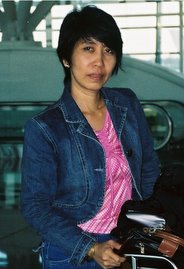Tony sat on a chair blindfolded and handcuffed. He screamed in pain, his face wrought in terror as his body convulsed.
The scene welcomed me in one of my visits to the rehearsals of Sining Malay Ensemble’s “Bombita ug Ako sa Tralala,” mounted by Alan Glinoga. Designed as a comedy, it became wicked towards the end. If I recall it right, the play was
Then there was “Ang Paglilitis ni Mang Serapio” of Paul Dumol, which revolved around a syndicate composed of beggars. I could still remember Bobby Cielo giving last minute instructions to his cast. They won the grand prize in an interschool theater festival in
“El Fili,”
Finally, there is this play I remember only through word of mouth and some
photos that its director, Betbet Palo, kept in his old wooden house. He was the theater desk coordinator of
Bombita, Mang Serapio, Kabesang Tales and the Priest are figures of the absurd and nonconformist whose stories underscore the oppressive structures of authoritarianism in which they – and we – lived. They symbolize the Filipino asserting his rights as a human being and citizen. Finding themselves in conflict with a society that threatened to overwhelm them, they had to cling to a faith in their humanity, in their identity and in a cause they felt they could die for.
Their coming into being on Philippine stage brought alive not only the language of the Pinoy – Bisaya in

Except for “Pagsambang Bayan,” I had either watched or been involved in various roles in the plays that I mentioned – which all had their run in
Historians say that this period was a turning point in the saga of the Filipino people. It was brief as brief could be – only a matter of years, but its impact was enormous because it dwelt on the consciousness of the people. It was a period when society’s rules, long held sacred and inviolable, were questioned; power relations that defined progress, peace and order were defied; suppressed ideas sprung up like thinking out of the box. The process was started by the intellectuals and the youth and quickly engulfed the rest of society.
The turbulent period told on theater as well. Western hegemony of what was legitimate and presentable began to crack when even West-trained playwrights and directors made contrary assertions in their works. As the 1960s ended, a new breed of theater artists experimented on activist themes and conflicts, making heroes out of the kargador and the sakada, and villains out of the honorable politico, propitario and members of the alta de sociedad. The new consciousness had to be performed onstage.
Fired up with an urgent sense of the theater, groups multiplied from
In particular, a theater of liberation engulfed
So here was theater returning to its roots. It could not have happened had there not been a turning point in its history.

No comments:
Post a Comment